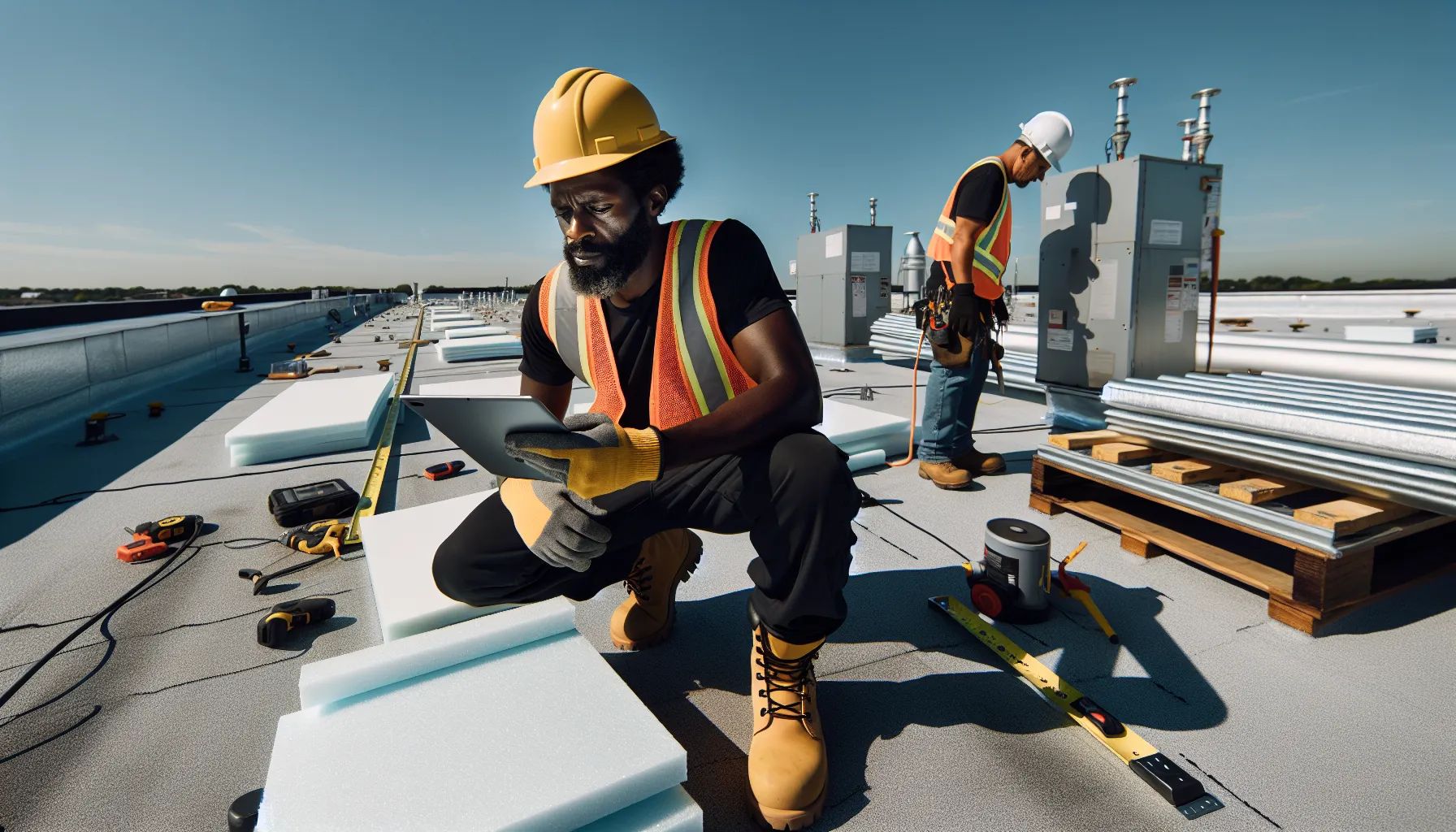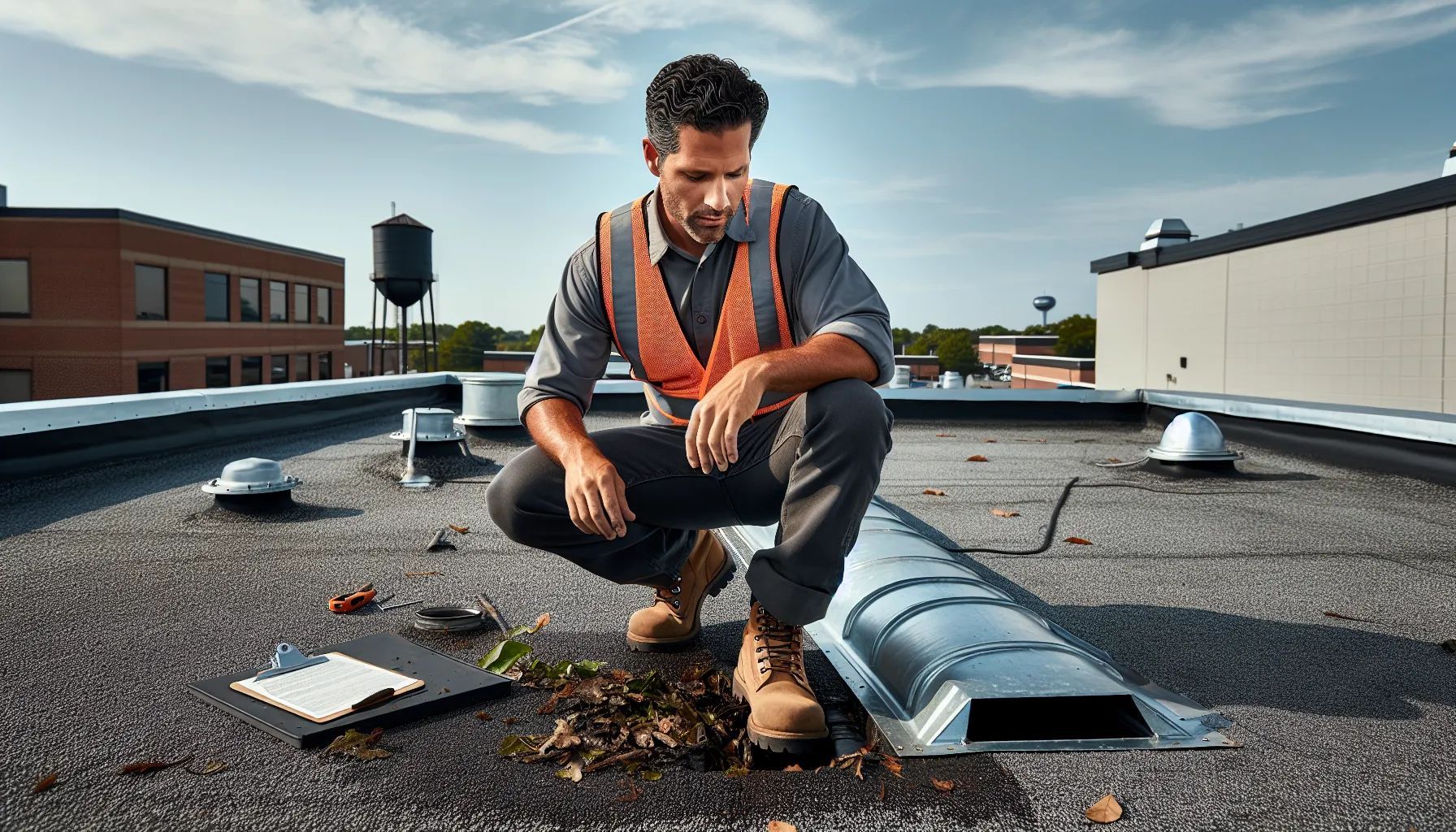How to Clean a Shingle Roof: Safe Methods to Remove Moss, Algae & Debris
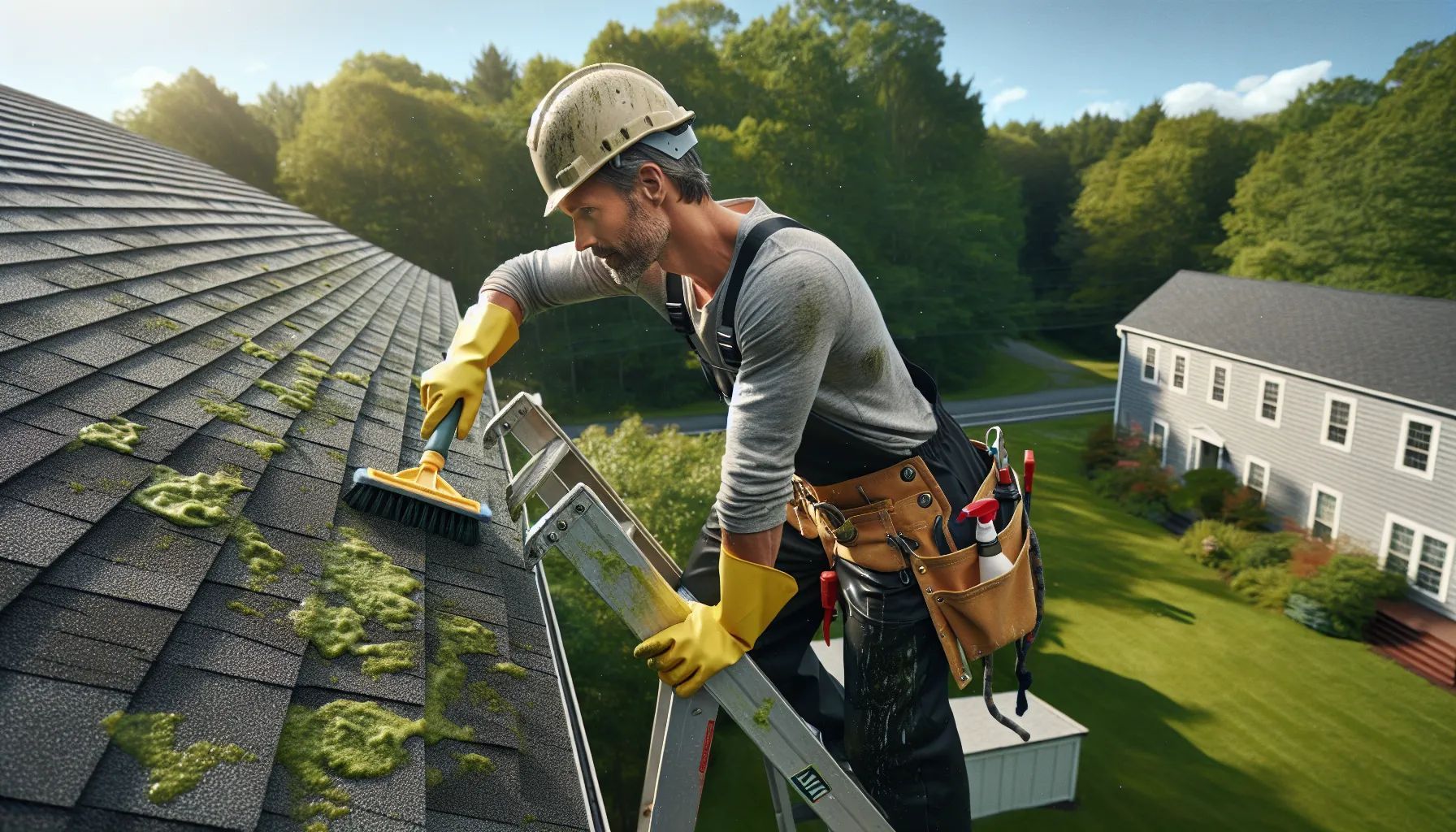
Your shingle roof protects your home from the elements but it needs regular maintenance to stay in top condition. Over time moss algae and debris can accumulate on your roof's surface potentially causing damage and reducing its lifespan.
We've discovered that proper roof cleaning doesn't have to be complicated or expensive. With the right approach and tools you can restore your shingles to their original appearance while extending their life by years. Whether you're dealing with stubborn black streaks or thick moss growth we'll show you the safest and most effective cleaning methods.
From choosing the right cleaning solutions to understanding when it's time to call professionals we'll cover everything you need to know. Let's explore how to clean your shingle roof without causing damage or voiding your warranty.
Understanding Shingle Roof Cleaning Basics
Recognizing different contaminants and their impact on shingle roofs forms the foundation of effective cleaning. We identify specific debris types and explain why consistent maintenance protects your investment.
Types of Dirt and Debris on Shingle Roofs
Black streaks on shingle roofs indicate algae growth, specifically Gloeocapsa magma bacteria. This organism feeds on limestone filler in asphalt shingles and spreads rapidly in humid climates. Green patches signal moss accumulation, which develops roots that lift shingle edges and create gaps for water infiltration.
Organic debris includes leaves, twigs, and pine needles that collect in roof valleys and gutters. These materials trap moisture against shingles and accelerate deterioration. Bird droppings contain uric acid that erodes protective granules on shingle surfaces.
Lichen appears as light-colored circular patches combining algae and fungus. This growth penetrates deeper than surface algae and requires specialized removal techniques. Tree pollen creates a yellow film during spring months that holds moisture and promotes biological growth.
Environmental pollutants like soot and industrial emissions leave dark deposits on roof surfaces. These particles embed in shingle granules and attract additional contaminants over time.
Environmental pollutants like soot and industrial emissions leave dark deposits on roof surfaces. These particles embed in shingle granules and attract additional contaminants over time.
Why Regular Cleaning Matters
Environmental pollutants like soot and industrial emissions leave dark deposits on roof surfaces. These particles embed in shingle granules and attract additional contaminants over time.
Clean shingle roofs last 20-25 years compared to 15-17 years for neglected surfaces. Algae and moss retain moisture that breaks down shingle materials and causes premature aging. Each cleaning session removes 2-3 pounds of accumulated debris per 100 square feet.
Insurance companies document that 35% of premature roof replacements result from inadequate maintenance. Regular cleaning prevents warranty voidance since manufacturers require periodic maintenance for coverage. Energy costs decrease by 10-15% when dark algae stains are removed because clean surfaces reflect more sunlight.
Property values increase by $5,000-$15,000 with well-maintained roofs according to real estate appraisals. Buyers perceive clean roofs as indicators of overall home care. Curb appeal improvements from roof cleaning generate faster sales at asking prices.
Preventive cleaning costs $200-$500 annually while roof replacement ranges from $5,000-$15,000. Early detection of damaged shingles during cleaning allows repairs before leaks develop. Professional inspections during cleaning identify potential problems that save thousands in water damage repairs.
Safety Precautions and Equipment Needed
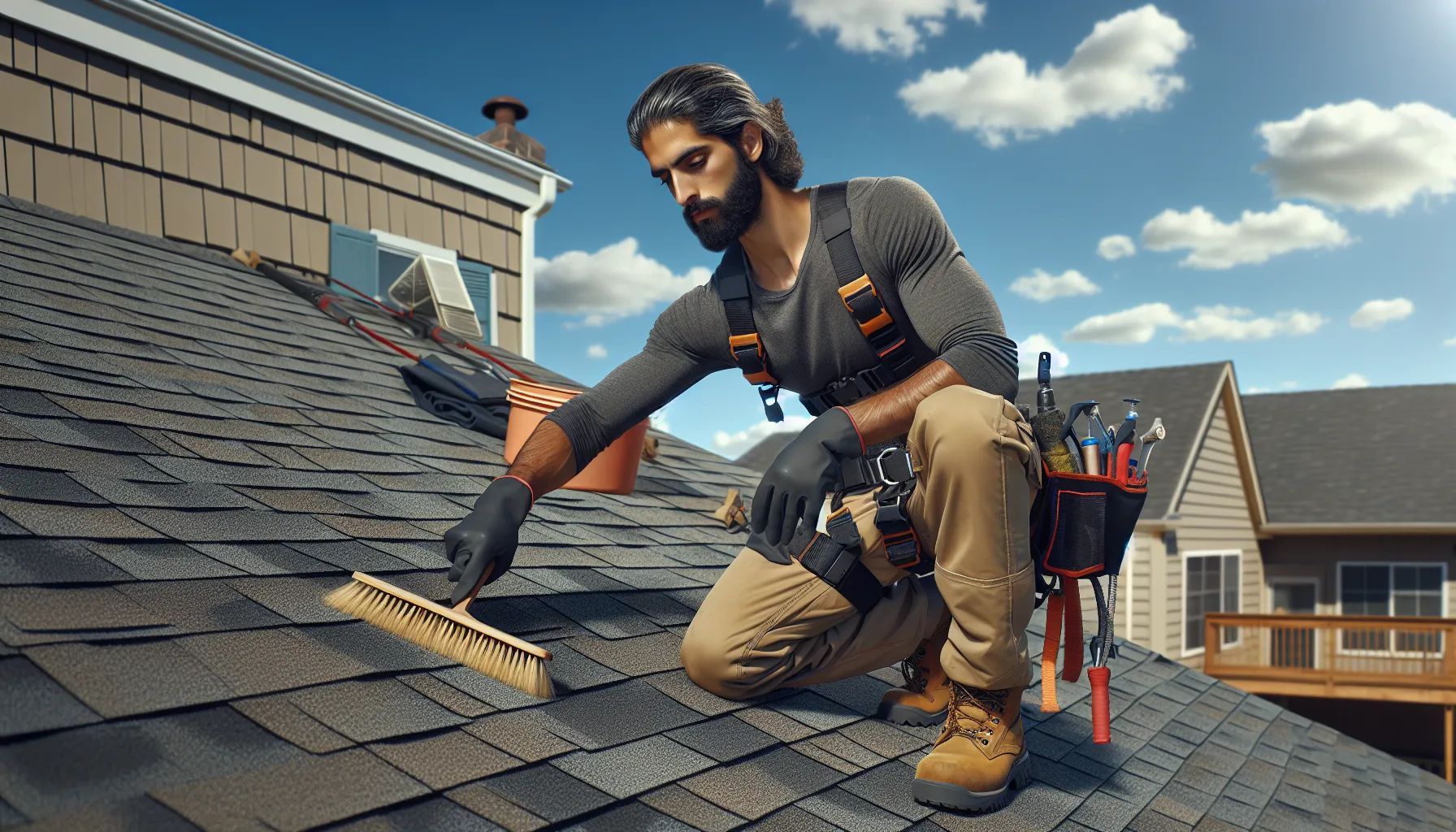
Cleaning a shingle roof requires specific safety measures and proper equipment to prevent accidents and achieve effective results. We prioritize safety first because working at heights poses significant risks, and using the wrong tools can damage shingles permanently.
Essential Safety Gear
A safety harness serves as your primary protection against falls when working on shingle roofs. Secure the harness to a stable anchor point before stepping onto the roof surface. Falls from roofs account for 34% of construction-related fatalities according to OSHA data.
Rubber gloves protect your hands from chemical burns when handling bleach-based cleaning solutions. Choose gloves rated for chemical resistance with a thickness of at least 15 mils. Safety goggles prevent cleaning solution splashes from reaching your eyes during application and rinsing.
Sturdy shoes with non-slip soles provide essential traction on wet shingle surfaces. Select footwear with deep treads specifically designed for roofing work. Athletic shoes or smooth-soled boots increase slip risk by 65%.
Durable clothing shields your skin from UV rays and chemical exposure during the cleaning process. Long-sleeved shirts and pants made from tightly woven fabrics offer the best protection. Light-colored clothing reflects heat and keeps you cooler during extended cleaning sessions.
Recommended Cleaning Tools
A garden hose with an adjustable spray nozzle delivers the right water pressure for rinsing without damaging shingles. Set the nozzle to a wide spray pattern that covers 2-3 square feet per sweep. Standard garden hoses provide 40-60 PSI of pressure, which safely removes cleaning solutions.
Pump sprayers distribute cleaning solutions evenly across roof surfaces. Choose models with 2-gallon capacity tanks for easier handling on sloped surfaces. Adjustable nozzles on pump sprayers create consistent coverage patterns that prevent chemical pooling.
Soft bristle brushes remove stubborn stains without scratching or lifting shingle granules. Select brushes with synthetic bristles no harder than medium stiffness. Natural bristles absorb chemicals and deteriorate quickly when exposed to bleach solutions.
Extension ladders provide safe roof access when properly positioned and secured. Place ladder bases 1 foot away from the wall for every 4 feet of height. Aluminum ladders weighing 25-35 pounds offer the best balance of stability and portability for residential roof cleaning projects.
Preparing Your Roof for Cleaning
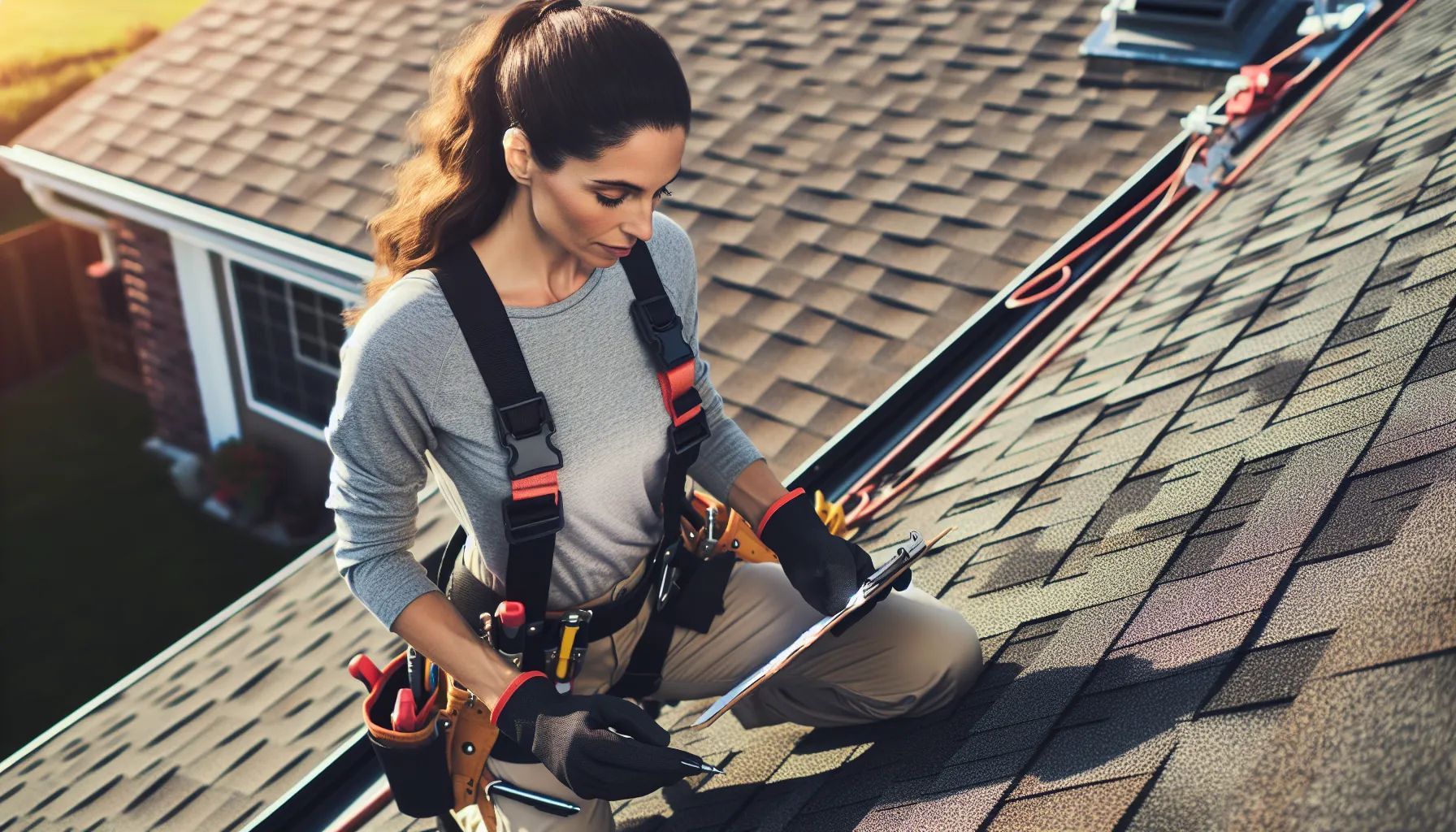
Proper preparation ensures effective cleaning results and prevents accidental damage to your shingles. We'll guide you through essential pre-cleaning steps that set the foundation for a successful roof maintenance project.
Inspecting for Damage
Visual inspection reveals potential problems before cleaning begins. We start by examining shingles for cracks, curling edges, or missing pieces that indicate wear. Check around chimneys, vents, and skylights where leaks commonly develop. Look for dark streaks or discoloration on shingles that signal algae growth patterns.
Examine the underside of eaves for water stains or rot. These signs indicate drainage issues that require attention before cleaning. Check exterior walls below the roofline for paint peeling or water marks. Document any damaged areas with photos for reference during repairs.
Professional roofers recommend inspecting shingles every 6 months. Spring and fall inspections catch seasonal damage early. Missing granules on asphalt shingles expose the material underneath to UV damage. Replace damaged shingles before cleaning to prevent water infiltration during the process.
Clearing Gutters and Downspouts
Clean gutters prevent water backup that damages roof edges and fascia boards. We remove leaves, twigs, and accumulated debris by hand or with a gutter scoop. A garden trowel works effectively for stubborn buildup. Flush gutters with water to check for proper flow toward downspouts.
Shine a flashlight into downspouts to spot blockages. Use a plumber's snake or pressure nozzle attachment to clear clogs. Installing gutter guards reduces debris accumulation by 75% according to home maintenance studies. Mesh guards cost $3-7 per linear foot and pay for themselves through reduced cleaning frequency.
Check gutter hangers and brackets for looseness or corrosion. Secure connections prevent sagging that creates water pooling spots. Apply gutter sealant to small holes or cracks discovered during cleaning. Replace sections with extensive rust damage to maintain proper drainage capacity.
Methods for Cleaning a Shingle Roof
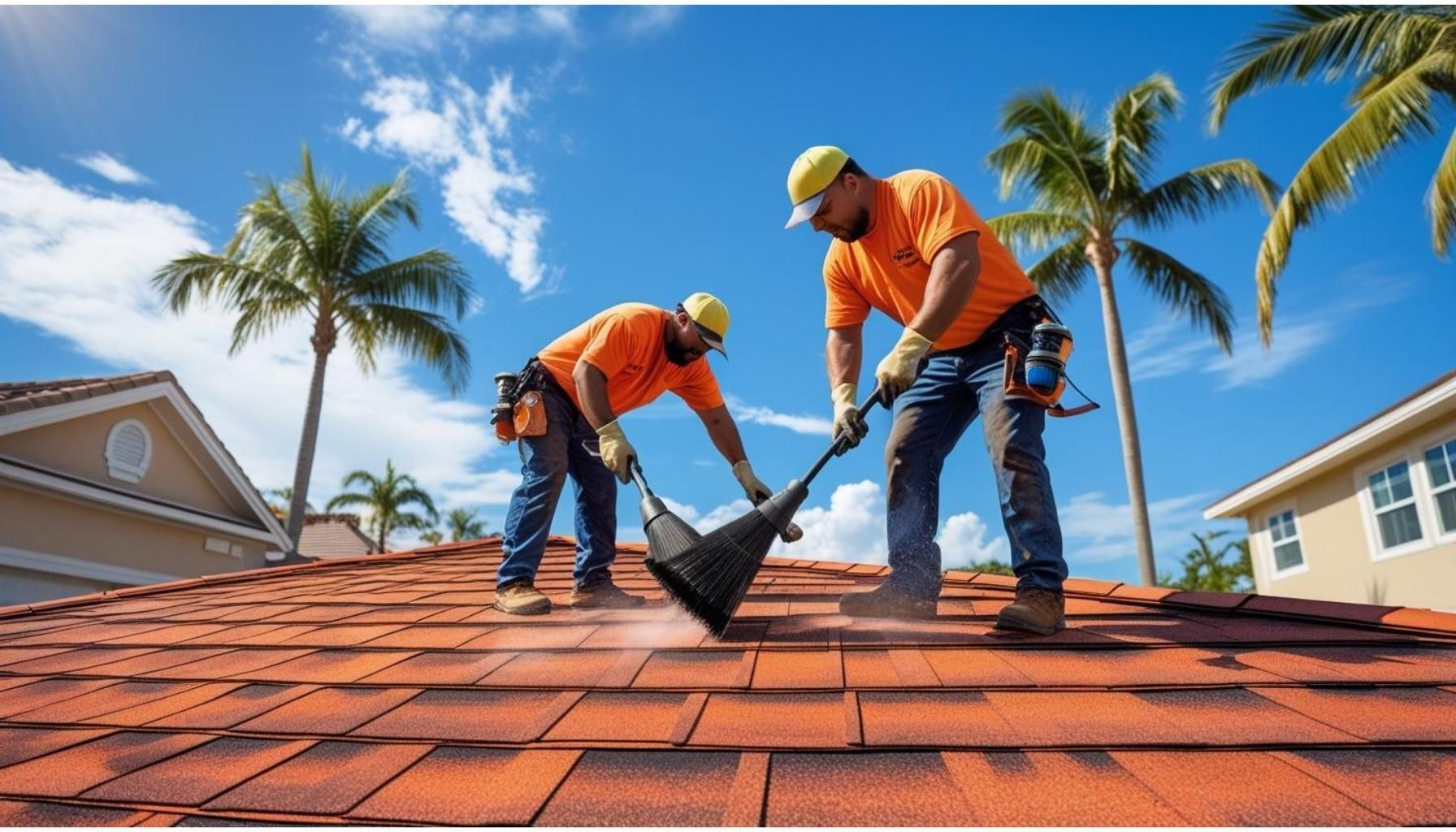
We've covered the essential preparations and now we'll explore three effective methods for cleaning shingle roofs. Each technique offers specific advantages for removing contaminants while preserving the integrity of your shingles.
Soft Washing Technique
Soft washing combines water, bleach, and surfactant in a specialized mixture that removes algae, mold, and grime without damaging shingles. We apply this solution using low-pressure equipment that operates at 100 PSI or less, compared to pressure washers that exceed 1,000 PSI.
The cleaning mixture typically contains:
- 50% water
- 50% bleach (sodium hypochlorite)
- 1 ounce of surfactant per gallon
We spray the solution evenly across the roof surface using a pump sprayer or dedicated soft wash system. The surfactant helps the bleach solution cling to vertical surfaces and penetrate organic growth. After 15-20 minutes, the solution breaks down algae cells and loosens debris.
Professional soft washing systems include specialized nozzles that create a gentle fan pattern. These nozzles distribute the cleaning solution without forcing it under shingles or stripping protective granules. We recommend this method for roofs with significant algae staining or moss growth.
Low-Pressure Rinsing
Low-pressure rinsing removes cleaning solutions and loosened debris without harming shingle surfaces. We use a standard garden hose set to its lowest pressure setting, avoiding high-pressure nozzles that can damage roofing materials.
Start rinsing from the roof peak and work downward in overlapping sections. This technique allows gravity to carry away contaminants while preventing water from flowing under shingles. Each section requires 30-45 seconds of rinsing to ensure complete removal of cleaning solutions.
Key rinsing guidelines include:
- Maintain 6-8 feet distance between hose and shingles
- Use sweeping motions rather than concentrated streams
- Rinse gutters simultaneously to prevent chemical buildup
We check for streaking or residue after the initial rinse. Areas with stubborn stains may require a second application of cleaning solution followed by another rinse cycle. Complete rinsing prevents chemical damage and ensures proper roof drainage.
Manual Debris Removal
Manual debris removal targets stubborn stains and accumulated organic matter that resist chemical cleaning. We use soft-bristle brushes specifically designed for roofing applications, avoiding wire brushes or abrasive tools.
Select brushes with:
- Synthetic bristles rated for outdoor use
- Extended handles for safe reach
- Bristle stiffness between soft and medium
We brush in gentle downward strokes following the shingle overlap pattern. This technique prevents lifting shingle edges or creating gaps where water can penetrate. Focus extra attention on valleys, edges, and areas around roof penetrations where debris accumulates.
Remove pine needles, leaves, and twigs by hand before brushing. These materials can scratch shingle surfaces when dragged across them. We place removed debris in buckets rather than allowing it to accumulate in gutters, preventing drainage blockages during the cleaning process.
Choosing the Right Cleaning Solutions
Selecting appropriate cleaning solutions protects shingle integrity while effectively removing algae, moss, and debris. We'll explore eco-friendly options and commercial products that clean without damaging your roof's protective coating.
Eco-Friendly Options
Eco-friendly cleaning solutions provide effective results without harming your landscape or environment. Mixing equal parts white vinegar and water creates a natural solution that removes moss and algae growth. This mixture works best on light to moderate contamination and requires 15-20 minutes of contact time before rinsing.
Laundry detergent offers another gentle option for cleaning shingle roofs. Combining 1/4 cup of detergent with 2 gallons of water produces a solution that lifts dirt and mild stains. We recommend using phosphate-free detergents to protect surrounding vegetation.
Biodegradable roof washes represent the most environmentally conscious choice. These specialized formulas contain plant-based surfactants that break down organic growth without toxic runoff. Products like oxygen bleach cleaners release hydrogen peroxide when mixed with water, providing cleaning power that dissipates into harmless compounds.
Application requires careful timing and weather consideration. Apply eco-friendly solutions during cool, overcast conditions to prevent rapid evaporation. Allow solutions to work for 10-30 minutes depending on contamination levels, then rinse thoroughly with clean water.
Commercial Roof Cleaners
Commercial roof cleaners deliver professional-grade results for stubborn stains and heavy contamination. Redihan's Roof Wash contains specialized ingredients that eliminate black streaks caused by Gloeocapsa magma algae. This product requires dilution at a 1:7 ratio with water and covers approximately 2,000 square feet per gallon.
Simple Green Industrial Cleaner/Degreaser provides versatile cleaning power for various roof contaminants. Its concentrated formula removes oil stains, tree sap, and atmospheric pollution when diluted 1:3 with water. The non-abrasive formula preserves shingle granules while lifting embedded dirt.
Roof Wash by Spray & Forget offers long-lasting protection against regrowth. This product continues working for up to 12 months after application, preventing new algae and moss formation. Coverage reaches 200-300 square feet per gallon when applied according to manufacturer specifications.
Professional-grade cleaners require specific safety precautions during use. Wear protective eyewear and rubber gloves when handling concentrated formulas. Pre-wet all vegetation within 10 feet of the roof edge and rinse thoroughly after cleaning to prevent chemical damage. Store commercial cleaners in cool, dry locations away from direct sunlight.
Step-by-Step Cleaning Process
We've prepared everything for safe shingle roof cleaning, and now it's time to execute the actual cleaning process. Following these systematic steps ensures thorough contaminant removal while protecting your shingles from damage.
Applying the Cleaning Solution
We apply the cleaning solution using a pump sprayer or garden hose attachment for even distribution across the roof surface. The bleach-water mixture (1:1 ratio) works best when applied from bottom to top, preventing streak marks on lower shingles. We spray sections of 100-150 square feet at a time, ensuring complete coverage without oversaturating the shingles.
The solution requires 15-20 minutes of contact time to break down algae colonies and moss roots effectively. We avoid applying cleaners during direct sunlight or temperatures above 85°F, as rapid evaporation reduces cleaning effectiveness. Cloudy days with temperatures between 50-75°F provide optimal conditions for chemical reactions.
We maintain consistent spray patterns, overlapping each pass by 6 inches to prevent missed spots. The solution changes color from clear to slightly green or brown as it dissolves organic growth, indicating proper chemical action. We reapply solution to heavily contaminated areas after 10 minutes for stubborn stains.
Proper Rinsing Techniques
We rinse the roof starting at the ridge line and working downward in 4-foot wide sections. The water pressure stays below 1,200 PSI to prevent granule loss and shingle damage. We hold the spray nozzle at a 45-degree angle, directing water flow with the natural slope of the roof.
Complete rinsing removes all cleaning solution residue, preventing chemical damage to shingles and protecting landscaping below. We use 2-3 gallons of water per square foot of roof area for thorough rinsing. The rinse water runs clear when we've removed all cleaning chemicals and dissolved contaminants.
We pay special attention to valleys and areas around flashing where chemicals tend to pool. Multiple rinse passes ensure no cleaning solution remains trapped under shingle edges. We inspect gutters during rinsing to confirm proper drainage and remove any accumulated debris or cleaning solution.
Common Mistakes to Avoid
We've seen countless homeowners damage their shingle roofs through improper cleaning techniques. Understanding these common mistakes helps protect your investment and ensures your roof lasts its full 20-25 year lifespan.
Pressure Washing Damage
Pressure washers strip away protective granules from shingles within seconds of contact. These granules shield your roof from UV rays and weather damage. Once removed, shingles deteriorate 3-5 times faster than normal.
We recommend keeping pressure washers at least 12 inches away from shingle surfaces. Standard pressure washers operate at 1,500-3,000 PSI, while shingles can only withstand 300-500 PSI safely. This excessive force creates immediate problems:
- Granule loss exposes the asphalt layer underneath
- Water infiltration increases by 40% in damaged areas
- Warranty coverage becomes void on most roofing products
- Repair costs average $300-500 per damaged section
Professional roof cleaners use specialized low-pressure equipment delivering 60-100 PSI. This gentle approach removes contaminants without compromising shingle integrity. Garden hoses with standard nozzles provide adequate pressure for most cleaning tasks.
Maintaining Your Clean Shingle Roof
Clean shingle roofs require consistent maintenance to preserve their condition and extend their lifespan. We'll explore effective preventive measures and establish optimal cleaning schedules that protect your investment.
Preventive Measures
Clean shingle roofs require consistent maintenance to preserve their condition and extend their lifespan. We'll explore effective preventive measures and establish optimal cleaning schedules that protect your investment.
Installing zinc or copper strips near your roof's peak creates a chemical reaction during rainfall that inhibits moss and algae growth. These 2-3 inch wide metal strips release ions that flow down the roof surface with rainwater. Professional installation costs $250-$500 for an average 1,500 square foot roof.
Trimming tree branches maintains at least 10 feet of clearance from your roof surface. Direct sunlight exposure reduces moisture retention by 40% compared to shaded areas. Schedule tree trimming annually in late fall when leaves have dropped.
Applying algae-resistant treatments extends the time between cleanings. Commercial products containing zinc sulfate or copper sulfate create protective barriers lasting 1-2 years. Apply these treatments after cleaning when shingles are completely dry.
Regular debris removal prevents organic material buildup. Use a leaf blower monthly during fall and spring to clear leaves, twigs, and pine needles. Focus on valleys and areas behind chimneys where debris accumulates.
Proper attic ventilation reduces moisture that promotes algae growth. Install ridge vents and soffit vents to maintain air circulation. Adequate ventilation decreases roof temperature by 10-15 degrees in summer months.
Recommended Cleaning Schedule
Climate conditions determine your roof's cleaning frequency. Properties in humid regions with annual rainfall exceeding 40 inches require cleaning twice yearly. Dry climates with less than 20 inches of rainfall need annual cleaning.
Spring cleaning removes winter debris and addresses any moss growth from wet months. Schedule cleaning in April or May when temperatures reach 50-70°F. Avoid cleaning during pollen season if you have allergies.
Fall maintenance prepares your roof for winter weather. Clean in September or October before leaves fall. This timing allows treatment applications to cure before cold weather arrives.
Inspect your roof quarterly for early problem detection. Look for dark streaks indicating algae growth, green patches showing moss development, and accumulated debris in valleys. Document findings with photos to track changes.
Emergency cleaning becomes necessary when moss covers more than 10% of roof surface or debris blocks water flow. Address these issues within 2-4 weeks to prevent structural damage. Heavy moss buildup can retain 20 times its weight in water.
Professional inspection every 3-5 years identifies hidden problems. Certified inspectors check flashing integrity, shingle adhesion, and ventilation effectiveness. Their reports guide maintenance planning and budget allocation.
Conclusion
We've explored how proper shingle roof cleaning protects your home's most vital shield against the elements. By following these methods and maintaining a regular cleaning schedule you'll avoid costly replacements and keep your roof performing at its best for decades.
Remember that prevention beats repair every time. Those quarterly inspections and seasonal cleanings we've discussed aren't just suggestions—they're investments in your home's future. Whether you tackle the job yourself or hire professionals the key is consistency.
Your shingle roof doesn't ask for much. Just some attention a few times a year and the right cleaning approach when needed. With these tools and techniques in your arsenal you're ready to keep your roof healthy strong and looking great season after season.
How often should I clean my shingle roof?
Clean your shingle roof every 1-2 years in humid climates, 2-3 years in moderate climates, and 3-5 years in dry climates. Conduct visual inspections every six months and schedule emergency cleaning if moss covers more than 10% of the roof surface or debris blocks water flow.
What cleaning method is safest for shingle roofs?
Soft washing with a low-pressure rinse is the safest method. Use a bleach-water solution (no more than 3% bleach concentration) applied with a garden sprayer, then rinse gently. Avoid pressure washers as they can strip protective granules and void warranties.
Can I use a pressure washer on my shingle roof?
No, pressure washing can damage shingles by stripping away protective granules, leading to faster deterioration and voided warranties. If you must use one, keep it at least 12 inches away from the surface and use the lowest pressure setting.
What are the signs my roof needs cleaning?
Look for dark streaks (algae), green patches (moss), accumulated debris in valleys, lichen growth, or visible stains. If any of these cover more than 10% of your roof or block proper drainage, schedule cleaning immediately.
How much does professional roof cleaning cost compared to DIY?
DIY cleaning costs $50-150 for supplies, while professional cleaning ranges from $300-600. However, professionals have proper equipment and expertise to avoid damage. Consider that roof replacement costs $5,000-15,000, making regular cleaning a wise investment.
When should I hire a professional instead of cleaning myself?
Hire professionals for steep roofs (over 6:12 pitch), extensive moss coverage, if you lack safety equipment, or notice structural damage. Also consider professionals for roofs over 15 years old or if you're uncomfortable working at heights.
